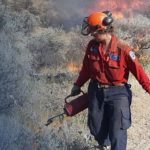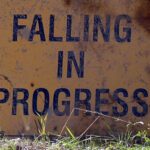Home »

Keeping dry when flooding happens
Elk River Current Connections
The snow is melting, the creeks and river are high. While the snowpack in the mountains was average in the winter, the long cold spring has allowed it to persist longer than usual. This change could pose a flood risk for the valley bottom. Hopefully convective storms do not add heavy rain at peak snowmelts.

Big floods are not the only cause of water damage to homes. Water damage can occur when significant rain happens at high water and the ground is super saturated as rivers rise. Ground water moves easily through gravels beside the Elk River gravels into the valley bottom where we live. When water has nowhere to go, inevitably it ends up in your basement.
As we spring forward toward June, historically high water month, it is important to be aware of extremely high rains coinciding with peak snowmelt, the cause of the last few big Elk River floods. We aren’t over this risk yet! Overland flooding if the river spills its banks causes the most significant damage in communities and to homeowners, especially if it involves moving water making direct contact with infrastructure and buildings.
Flooding is an issue that some residents in the Elk River floodplain face annually. But how do you know if you’re at risk, and what to do to protect your property from this seasonal water fluctuation and how can you be protect your property from flooding?
- Know where your property is located relative to the floodplain. For residents between Hosmer and Coal Creek, this can be done by checking out the flood mapping simulation tool available at www.elkriveralliance.ca. This may help you to determine whether you are at risk of the occasional small amount of water seeping into your basement, or if you should plan for larger regular flooding. Flood mapping in the Elk River watershed is woefully out of date, but the maps are not too far off the mark.
- By determining your initial risk, decide what is your level of flood tolerance. If you do not want to be at risk of water damage from flooding at all, relocation may be your only option. However, if you are prepared to work with the natural environment, you can make structural alterations to your property to mitigate the damaging affects of floods. These options require substantial consideration be given to the types of stresses that flooding would potentially exert on your home, both vertically and horizontally, in manners that buildings are not normally designed to withstand. It is recommended that you consult the advice of a qualified, professional engineer prior to making any alterations. Try to find one that has experience with overland flood proofing.
- Decide which flood proof technique you want to employ to protect your home: dry flood proofing and wet flood proofing.
Dry flood proofing involves making structural alterations to a building in order to keep the enclosed space dry. This can be done in a number of ways: 1) seal all the walls and openings (e.g. doors, windows, etc) against water; 2) raise the building above the flood level by placing it on fill, such as sand; 3) build berms or flood proof walls surrounding the building to keep water out.
Wet flood proofing does not involve any attempts to keep water out of a building, but instead to mitigate the damage done by water entering the building. Wet flood proofing options involve: 1) moving important items that could be damaged in a flood, such as a freezer, to higher ground; 2) raising items that cannot be removed onto platforms; 3) sealing off sewer systems or installing backflow protection systems; 4) taping over heating and cooling ducts preventing water damage; 5) removing carpet from basements and instead using rugs that can be removed or better yet stamped concrete or tile floors with waterproof walls; and 6) varnishing wooden floors and doors before a flood, as this can help prevent the growth of mold and bacteria.
Whatever you decide to do, in the event of an inevitable flood, it is recommended to unplug electronics and turn off utilities. It’s important to make a plan of action and take early steps to be prepared for flooding and discuss your safety evacuation plan with family.
Homeowners need to be remined that overland flood insurance is not generally available for residential homes and residents living within the floodplain are usually exempt. The onus is on the homeowners to protect their property. Don’t live with false hope that the government will compensate you for the damage of flooding to your private residence.
To learn more about flooding in the Elk River watershed visit www.elkriveralliance.ca to review the Elk River Flood Strategy.
Lead image: Paddlers move up a street in West Fernie during the 2013 Elk River flood. Ian Cobb/e-KNOW file photos
Submitted by Lee-Anne Walker, Elk River Alliance Executive Director







